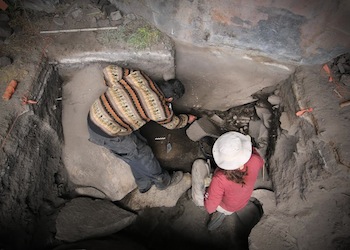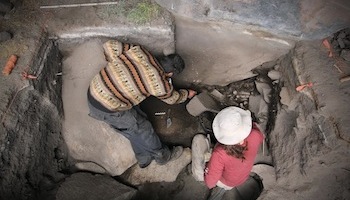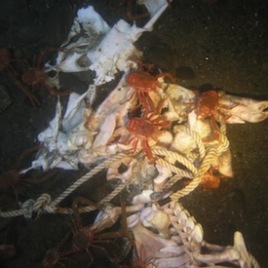
Researchers Kurt Rademaker and Sonia Zarrillo in an excavation at Cuncaicha, in Peru. New evidence suggests that humans colonized the extreme environment over 12,000 years ago, a mere 2000 years after they first arrived in South America. (Photo credit: Kurt Rademaker)
Evidence of the highest and oldest human settlements in the Peruvian andes offers insight on how quickly humans can adapt to extreme environments.
Researchers found tools, animal bones and plant remains that suggest a human habitation in three locations: the Pucuncho workshop site (4355 metres above sea level), the Cunchaicha workshop (4445 metres above sea level) and the Cuncaicha rock shelter (4480 metres above sea level).
The remains have been dated to more than 12,000 years ago, which is only about 2,000 years after humans first entered South America.
These results suggest that human adaptation to the extreme cold and low-oxygen environment of the Andes – which requires significant genetic and physiological changes – could have happened more quickly than previously believed.
Original research paper published in Science on October 23, 2014.
Names and affiliations of selected authors

